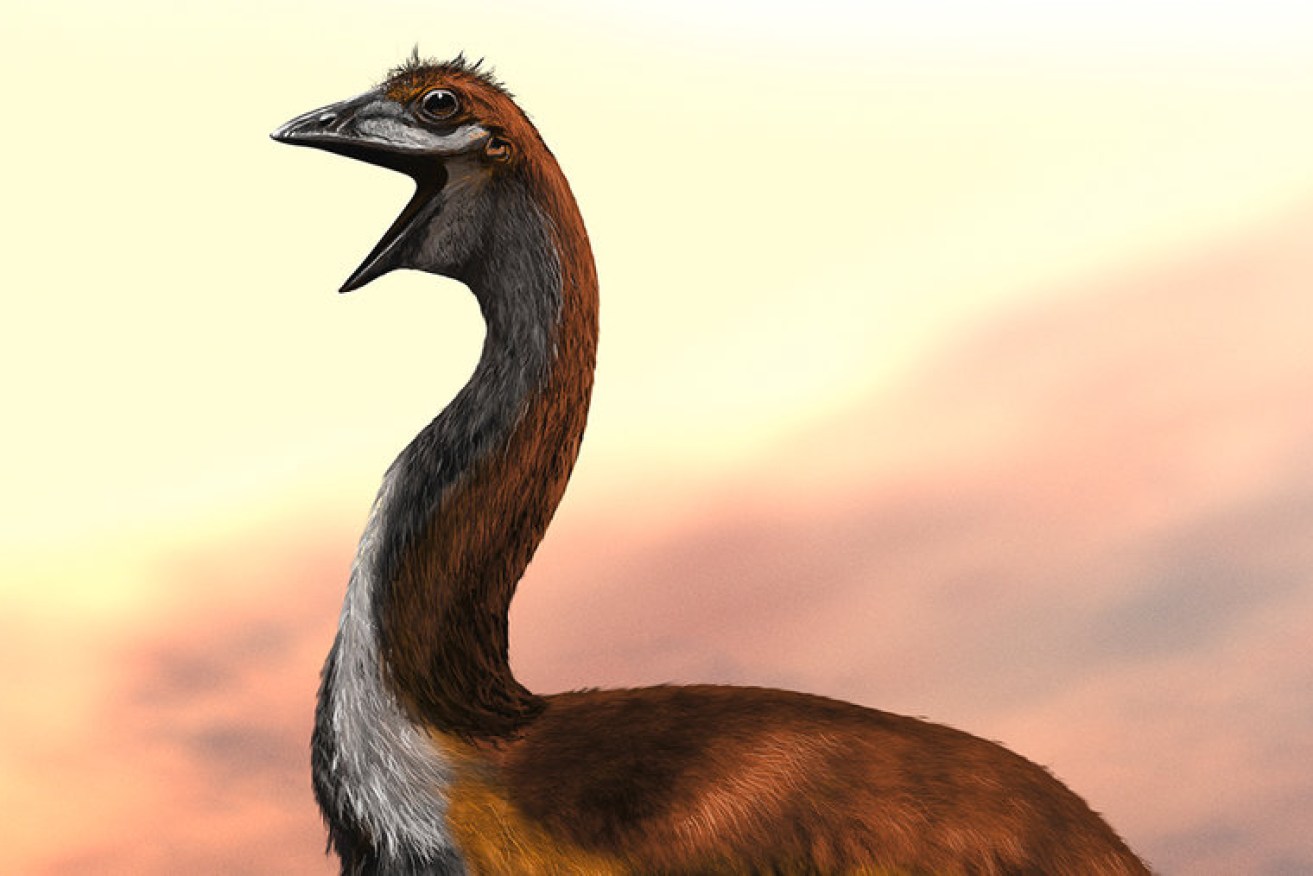Biggest bird ever confirmed: our own ‘demon duck of doom’ close second


Meet the biggest bird of all – Vorombe titan. Photo:Photo: Zoological Society London
The biggest bird that ever lived has a new name – Big Bird, or “vorombe” in Malagasy, the national language of Madagascar, where the bird stomped around more than 1000 years ago in the company of man-sized lemurs.
Vorombe titan – a species of elephant bird – was three metres tall (half as tall as a giraffe), weighed 800 kilograms (about eight times heavier than the ostrich) and laid eggs 160 times bigger than chicken eggs.
The particular species of elephant bird has long been thought to be the most massive in history. But the research was confused – until a review of bones by the Zoological Society of London finally settled the argument.
Which elephant bird is bigger?
Elephant birds belong to the family Aepyornithidae – and were thought to include 15 different species in two genera. They are an extinct group of colossal flightless birds – part of a group called ratites that include the emu – that dominated Madagascar until about 10,000 years ago.
But even the date of elephant bird extinction is a mystery. It’s largely thought they faded in the past 1000 years, but there were reports of giant ostrich-like birds seen on Madagascar as late as the 17th century.

The bones of Vorombe titan weren’t only bigger, but differently shaped. Photo: Zoological Society London
The first species to be described, Aepyornis maximus, was popularly believed to be the world’s largest bird from about the 19th century. Then, in 1894, British scientist C.W. Andrews described an even larger species, Aepyornis titan – although this was largely dismissed as an unusually large specimen of A. maximus.
Demon duck taller, thinner
Matters were further complicated recently when a Flinders University study suggested that a species of challenged the elephant bird for epic hugeness. Dromornithids were an ancient family of giant flightless birds of central Australia, closely related to birds that eventually became ducks.
While Dromornis stirtoni (also reportedly known as the “demon duck of doom”) might have been up to half a metre taller, it was much lighter – at about 500 kilograms or so.
But when researchers from the Institute of Zoology Society of London analysed hundreds of elephant bird bones from museums around the world, they found that C.W. Andrews’s titan was indeed the largest.
In fact, it was much larger than poor old maximus. But its bones were also so different in shape that the taxonomy (classification) of elephant birds has been completely rewritten. Hence the name change.
Bones of contention
Dr James Hansford, the lead author of the research paper published this week in Royal Society Open Science, said the survey found there were four species of elephant bird (not 15), and three genera rather than two. This constituted the first taxonomic reassessment of the family in more than 80 years.
“Elephant birds were the biggest of Madagascar’s megafauna and arguably one of the most important in the islands evolutionary history – even more so than lemurs,” Dr Hansford said.
“This is because large-bodied animals have an enormous impact on the wider ecosystem they live in via controlling vegetation through eating plants, spreading biomass and dispersing seeds through defecation. Madagascar is still suffering the effects of the extinction of these birds today.”
Co-author Professor Samuel Turvey said knowing the history of biodiversity loss was essential to determine how to conserve today’s threatened species.
When analysing the bones, the researchers found evidence that humans arrived on the island of Madagascar more than 6000 years earlier than previously thought, according to a study in the journal Science Advances in September.
Ancient bones from elephant birds showed cut marks and depression fractures consistent with hunting and butchery by prehistoric humans. Using radiocarbon dating techniques, the team could determine when these giant birds had been killed, which led to them reassessing human arrival on Madagascar.
A Yale anthropologist believes humans contributed to the demise of elephant birds – not by hunting, but by stealing their eggs.








